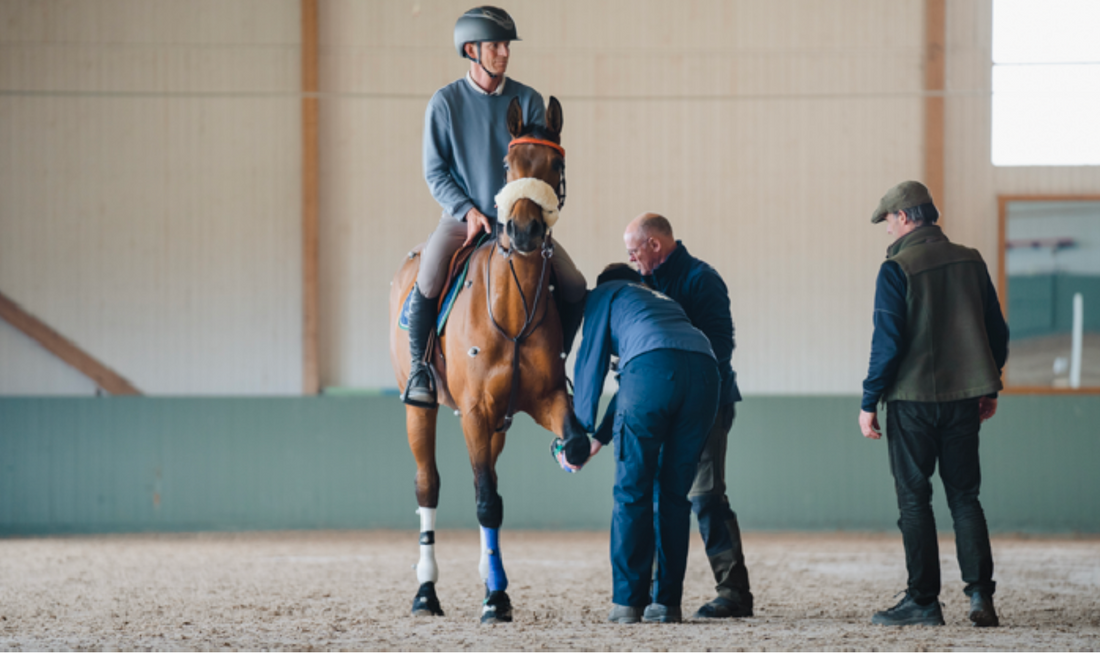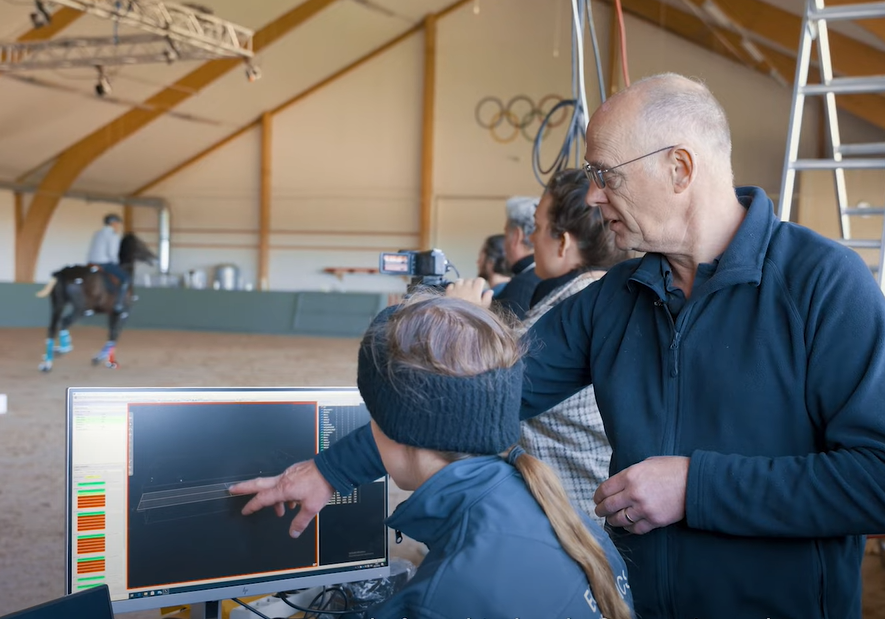
New Research on why Barefoot Horses remain Sounder than Shod Horses
Share
The barefoot movement is growing amongst top professional riders worldwide, and finally a comprehensive Swedish research project is to determine exactly why there are so many benefits from ditching your horse’s iron shoes and going barefoot instead.
By Helle Maigaard Erhardsen
Since the Olympic Gold medallist and World number one in Showjumping Peder Fredricson pulled the shoes of his horses and went barefoot, he has had far fewer issues with lameness, far less injuries to the hooves and lower limbs and not a single hoof abscess. And perhaps needless to say, his horses keep bringing home the gold like never before.
But why is that? For decades hoof rehabilitators and horse owners have experienced extraordinary results with taking previously shod horses barefoot, but there has been very little research done to support these results scientifically.
So far, fragments of larger studies and smaller case studies have proved how iron shoes increase concussion when the horse lands, how iron shoes interrupt the blood supply to the hooves and inhibits the hooves’ ability to contract and expand. And the renowned podiatry researcher Dr. Robert Bowker VMD has even described how shoeing can be the direct cause of caudal heel pain, also referred to as navicular disease.
However, with next to no specific research comparing the performance of a barefoot hoof to a shod hoof, the debate between pro-shoe horse people and anti-shoe horse people have relied mostly on belief, tradition and personal experience. Now, a new comprehensive research project by The Swedish Agricultural University (SLU) and Agria Animal Insurance is well on the way to scientifically determine the difference between the barefoot hoof and the shod horse hoof.
 SLU Professor Lars Roepstorff and his team conducting research for the new comprehensive barefoot study with Peder Fredricson performing an empirical riding test in the background.
SLU Professor Lars Roepstorff and his team conducting research for the new comprehensive barefoot study with Peder Fredricson performing an empirical riding test in the background.
A Shod Hoof can’t Expand or Contract as much as a Barefoot Hoof
The Swedish research project is led by Professor Lars Roepstorff, who has been collecting data from empirical riding tests and in-depth interviews throughout the past year. The preliminary results from the first phase of data analysis confirms what smaller studies previously have found: Traditional horseshoes do affect the function of the horse’s hooves.
“The iron shoe locks the so-called hoof mechanism especially when landing after obstacles. The shod hoof can’t expand or contract as much as the barefoot hoof because the shoe inhibits lateral movement. It could mean that the blood flow in the shod hooves is inhibited, and this blood flow is important for the hooves to be healthy,” Roepstorff explained to Agria Djurförsäkring.
In this first stage of the study, the researchers have been focussing on measuring the internal movements of the hoof with and without horseshoes. Professor Lars Roepstorff found it particularly interesting to be able to describe the difference in how much the hoof was allowed to contract during the rollover phase:
“When the mechanism of the hoof is described, it’s often said that the hoof expands when it lands on the ground, which is correct. But we also see that the hoof contracts during the rollover phase and that movement is inhibited by horseshoes. That has not been described very well in literature before now,” Lars Roepstorff said.
Further analysis is to be made to draw conclusions on the actual consequences of the hooves moving less with shoes, like how this affects blood circulation, load and shock absorption.
 The new Swedish research has shown that it’s not only the rigid iron shoe itself that inhibits normal, healthy hoof function, but also the way it is fixed to the hoof with nails.
The new Swedish research has shown that it’s not only the rigid iron shoe itself that inhibits normal, healthy hoof function, but also the way it is fixed to the hoof with nails.
Barefoot Horses are more Cautious where they put their Feet than Shod Horses
One of the advantages that Peder Fredricson has discovered since going barefoot with his top-level showjumping horses, is that the horses now can feel the ground much better and are far more careful with how and where they put their feet. He links this improved ground sensitivity, also known as proprioception, to the less injuries and lameness issues he has had in his horses since he took their shoes off.
“I think that adaptation to the ground conditions is part of keeping the horse’s hooves healthy and strong. Horses don’t see where they put their hooves, they only sense the ground conditions when they have put their hooves in the ground. With shoes, we remove the feeling from the hoof, so they can move unhindered regardless of the ground. Even in those situations where they really should have been a little cautious,” Peder said according to Agria Djurförsäkring.
Moreover, it is Peder’s experience that metal horseshoes can disguise an incipient injury, which makes it difficult to discover a problem before it turns into actual lameness. Differently, a barefoot horse will instantly display any discomfort:
“You can compare it to when we humans walk barefoot across a gravel field. It may look painful before the feet have hardened and adjusted, but when we get to the grass we can walk normally again. You need to learn and understand the difference between what temporary sensitivity is and what is an injury. Horses with shoes can go for a long time with an injury before it is noticed that it is lame,” Peder said.
Watch Peder Fredricson explain his role in the new research project and his experiences with going barefoot with his horses.
Hoof Function Affects the lower part of the Horse’s Leg
Next step in the Swedish study will be to analyze how the horses' movements are affected more generally with and without shoes - for example in terms of stride length, stride height and angles.
“We would also like to try to calculate if and how the forces in the horse's legs, which are needed to drive the movement, change with and without shoes. For example, is the load on the deep flexor tendon or on the crown joint affected by shoeing,” Roepstorff said to Agria Djurförsäkring.
At the time being, the research team is halfway through the in-depth interviews, which are conducted as a part of the study. These interviews show that there is a need for science based knowledge among horse professionals regarding details of hoof function itself and how it affects load conditions internally in the lower part of the leg.
We at Scoot Boots are much looking forward to following the Swedish research projects as it moves along, and stay tuned for when the final results are expected to be published around the end of year 2022.
Read more about how Barefoot Horse Hooves Can Move 50% More than Shod Hooves
Read more about How to Transition your Horse from Iron Shoes to Barefoot
Read more about Using Hoof Boots as an Alternative to Horseshoes
Find more information about using Scoot Boots here
|
About the author
Helle Maigaard Erhardsen is an investigative journalist specialising in environmental issues. Her devotion to the outdoors includes a life long passion for horses of which she has three: Pannigan - an off-the-track Thoroughbred, Luka - a Paint Quarter Horse/Arab and little Audrey - a Shetland pony, who are all bitless and barefoot. Helle is born in Denmark, where she graduated from the Danish School of Media and Journalism in 2015. Her work is characterised by comprehensive research and she was nominated for the special media award Bording Prisen for her investigative reporting with the newspaper Ing.dk. She later obtained a Master’s degree in Journalism, Media and Communication from UTAS, when she relocated to Tasmania. |

